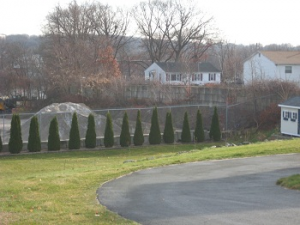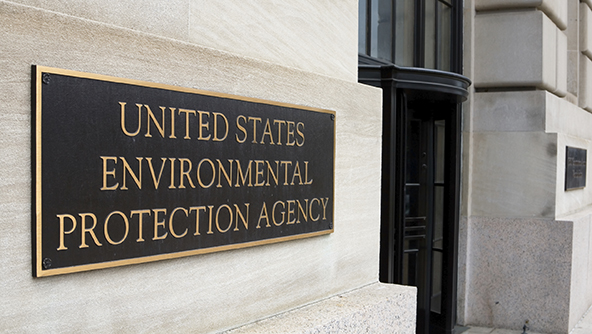
RHODE ISLAND
The EPA and the Rhode Island Department of Environmental Management announced today that two subsidiaries of Stanley Black & Decker Inc.—Emhart Industries Inc. and Black & Decker Inc.—agreed to clean up dioxin-contaminated sediment and soil at the Centredale Manor Restoration Project Superfund Site in North Providence and Johnston, Rhode Island.
“This settlement demonstrates the tremendous progress we are achieving working with responsible parties, states, and our federal partners to expedite sites through the entire Superfund remediation process,” said EPA Acting Administrator Andrew Wheeler. “The Centredale Manor Site has been on the National Priorities List for 18 years; we are taking charge and ensuring the Agency makes good on its promise to clean it up for the betterment of the environment and those communities affected.”
The settlement, which includes cleanup work in the Woonasquatucket River and bordering residential and commercial properties along the river, requires the companies to perform the remedy selected by EPA for the Site in 2012, which is estimated to cost approximately $100 million and resolves longstanding litigation.
The cleanup remedy includes excavation of contaminated sediment and floodplain soil from the Woonasquatucket River, including from adjacent residential properties. Once the cleanup remedy is completed, full access to the Woonasquatucket River should be restored for local citizens. The cleanup will be a step toward the State’s goal of a fishable and swimmable river. The work will also include upgrading caps over contaminated soil in the peninsula area of the Site that currently houses two high-rise apartment buildings. The settlement also ensures that the long-term monitoring and maintenance of the site, as directed in the remedy, will be implemented to ensure that public health is protected.
Under the settlement, Emhart and Black & Decker will reimburse EPA for approximately $42 million in past costs incurred at the Site.
The companies will also reimburse EPA and the State of Rhode Island for future costs incurred by those agencies in overseeing the work required by the settlement.
The settlement will also include payments on behalf of two federal agencies to resolve claims against those agencies.
These payments, along with prior agreements related to the Site, will result in a 100 percent recovery for the United States of its past and future response costs related to the Site.
Litigation related to the Site has been ongoing for nearly eight years.
While the Federal District Court found Black & Decker and Emhart to be liable for their hazardous waste and responsible for conducting the cleanup of the Site, it had also ruled that EPA needed to reconsider certain aspects of that cleanup.
EPA appealed the decision requiring it to reconsider aspects of the cleanup. This settlement, once entered by the District Court, will resolve the litigation between the United States, Rhode Island, and Emhart and Black and Decker, allowing the cleanup of the Site to begin.
The Site spans a one and a half-mile stretch of the Woonasquatucket River and encompasses a nine-acre peninsula, two ponds and a significant forested wetland.
From the 1940s to the early 1970s, Emhart’s predecessor operated a chemical manufacturing facility on the peninsula and used a raw material that was contaminated with 2,3,7,8-tetrachlorodibenzo-p-dioxin, a toxic form of dioxin.
The Site property was also previously used by a barrel refurbisher. Elevated levels of dioxins and other contaminants have been detected in soil, groundwater, sediment, surface water and fish.
The Site was added to the National Priorities List or NPL in 2000, and in December 2017, EPA included the Centredale Manor Restoration Project Superfund Site on a list of Superfund sites targeted for immediate and intense attention.
Several short-term actions were previously performed at the Site to address immediate threats to the residents and minimize potential erosion and downstream transport of contaminated soil and sediment.

